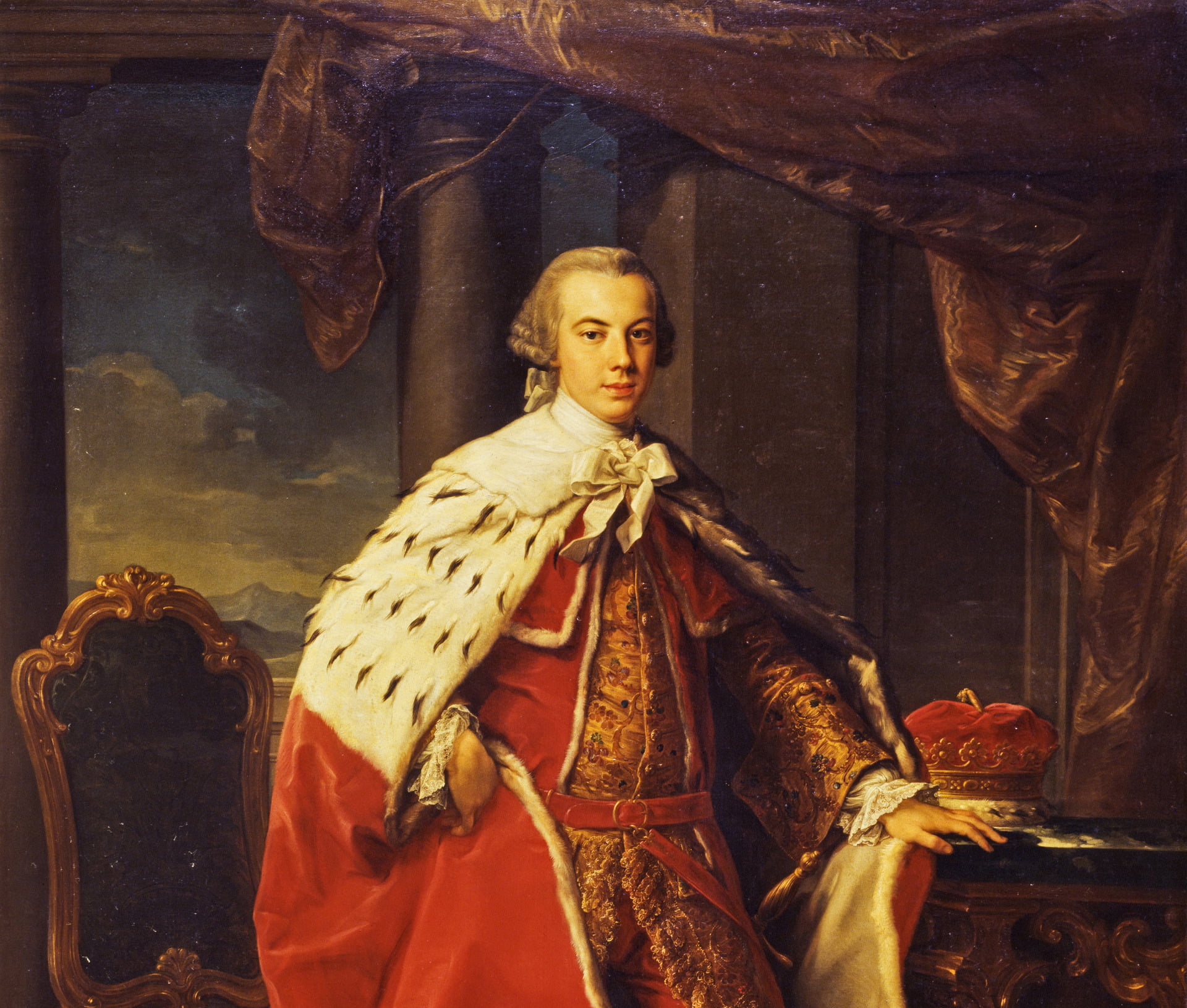In the late 17th century the robes that peers wore at coronations were standardised – crimson velvet cloaks reached to the feet, extending slightly to trail on the ground at the back, with an open front, lined and edged with ermine.
Peers and peeresses (including wives of peers) wear full Robes of State. Peers’ robes are full-length garments of crimson velvet, edged with miniver pure (white fur from the winter coat of the Northern red squirrel), with a full cape of miniver pure. Narrow rows of ermine tails (the ermine is a stoat, Mustela erminea) are sewn on to the cape to symbolise the peer’s rank:
A peeress’s coronation robe is a long-trained crimson velvet mantle, edged with miniver pure, with a miniver pure cape. The length of the train varies with the rank of the wearer.
These are worn over full-dress uniform, court dress, evening dress or a black suit with a bow tie.

The Third Duke of Roxburghe (1740–1804) wearing his coronation robes by Pompeo Batoni
Peers only wear coronets at coronations. The coronets that peers wear during the ceremony are differentiated according to rank. The coronet is a silver-gilt circlet, with a crimson silk Genoa velvet lining, a gold tassel and a band of ermine around the base. The rank of peer is indicated by the form of the coronet he or she wears at a coronation.
In addition to the tiaras which peeresses put on after the Queen Consort has been crowned, they are permitted, according to the Earl Marshal’s regulations, to wear jewels round the neck, on the bodice, and upon the petticoat. The design of the tiaras must be high in the centre, and sloping off towards the sides, otherwise there is no restriction as to design or weight (usually as light as possible), which is left to the pleasure of the wearer.
Other male participants in the procession wear full-dress uniform, court dress with knee breeches or trousers, morning dress or dark lounge suits.
Female participants wear evening dresses or ‘afternoon dresses’, with a light veil covering the back of the head. Coats and hats are not permitted but tiaras can be worn.
On the occasion of King Charles III’s coronation, peers have been requested not to wear traditional robes, including coronets. They may opt to wear parliamentary ermine (the robes that they wear for the State Opening of Parliament) or standard business attire.
This revised dress code reflects the more pared-down ceremony for King Charles III. In a similar move at Queen Elizabeth II’s coronation in 1953, peers were allowed to substitute their coronets for “hats of maintenance”, red velvet caps lined with ermine.
However, the advice was amended in the week before the Coronation and it was announced that hereditary peers and sitting members of the House of Lords who have been invited to the Coronation can wear Coronation robes, should they wish. Coronets will not be worn.
Image, top: An earl, wearing crimson robe and surcoat over court dress and holding his coronet, and countess, wearing crimson robe and kirtle over a court dress and wearing her coronet (1780). From a portrait od George, 2nd Earl Harcourt by Sir Joshua Reynolds.